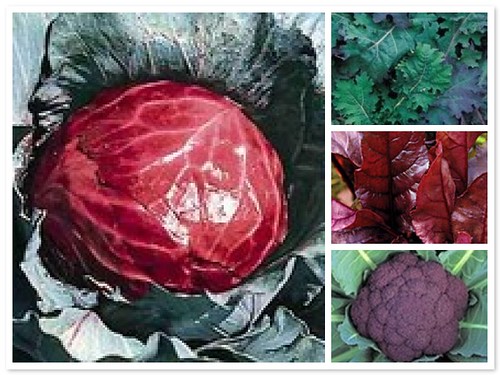 As fall approaches, its time to get the second bed going. This time the focus will be on leafy greens, lettuces, bulby plants like garlic and onions, beets and other tasty roots, cabbages and their cousins, and maybe some beans.
As fall approaches, its time to get the second bed going. This time the focus will be on leafy greens, lettuces, bulby plants like garlic and onions, beets and other tasty roots, cabbages and their cousins, and maybe some beans.There are lots of resources and even more opinions about what to do when. The following is my wholly unscientific conclusion, based on my zone 7/8 status, several websites I trust, as well as the kind words of wisdom from lifelong gardeners who seem to have a few tricks up their sleeve. They really may not have anything up their sleeves aside from a poorly performing cold weather garden, but I can't prove that just yet.
So gather your seeds and organize them in chronological order of when to start. Here's the first task: start inside now your cabbage, broccoli, cauliflower, brussel sprouts, and collard seeds, note when to transplant as directed on the seed packet.
Lima, snap, fava beans and some peas can be directly sown outdoors; also direct sow beets, radishes, carrots, chard, rhubarb, parsnips daikon, and rutabaga. There are mesh screens you can buy to give them a little relief from the summer heat that is still kickin' but at $2 a yard, you can't beat burlap bought from your local fabric store. The natural fibers will biodegrade, so less impact on the precious earth, too!
Now, I haven't tried this in the past, but seems worthwhile to attempt a last crop of sweet corn. You can even try tomatoes if you didn't get enough through the summer. I have rooted some of the lower branches I pruned off my tomato plants, and will just stick 'em in the dirt and see how it goes. As of right now, I have enough tomatoes to last me until next year anyway.
Also, my peppers and okra are picking up now. I can only imagine they would be much happier had I started them indoors a month ago to transplant them now. The nonproductive summer has made them leggy and lanky. . . I only wish unproductive summers would have the same affect on me.
Start in the garden in early September: kale, kohlrabi, beets, mustard, turnips, interesting varieties of lettuce, spinach and other greens. You'll enjoy delicious salads as the last of your tomatoes ripen, and the more cold hardy greens ready themselves to nurture you through the colder weather.
Wait out the Fall and in November put in your asparagus crowns. I have read to plant about 6 per person you are planning to feed. Me, I love asparagus and will be much more generous with my planting. Also, stagger your plantings over the course of several years. Like strawberries, asparagus takes a year or two to establish and has a 20 year life span on average. Once established, they require minimal upkeep and watering. Last year I planted 12 crowns and plan on another 12 this year.
But, if my little bit here, little bit there approach is hard to follow, The North Carolina Cooperative Extension has the most beautiful layout for fall planting. No confusion or wishi-washiness there! Our first frost date is October 14 or 15, so adjust accordingly. You can find your info out in the Almanac for the United States here, and for Canada here.
Also remember, even though you won't see as many colorful fruits on the vines like the lush ripe Summer garden produces, there are some absolutely gorgeous colors for the fall garden. Kale varieties include blues and deep reds, plant Brite Lights Swiss Chard for yellows, oranges and pinks, beets can be the most amazing fuschia. Even beans come in some amazing polka dots and deep burgandies.
I would suggest mixing fall veggies in with your flower beds. As the seasons change and summer annuals lose their glory, the ruffles of kale will keep the visual interest of the garden. Think of how unique a patch of purple kohlrabi intermingling with red spider lilies could be. Make sure to harvest the seeds from your summer flowers to save and sow next year. Because at the heart of gardening there is always a new and exciting season to plan for!
PS: If you're interested in any of the veggies pictured, they are available as seeds on Local Harvest's website.

No comments:
Post a Comment